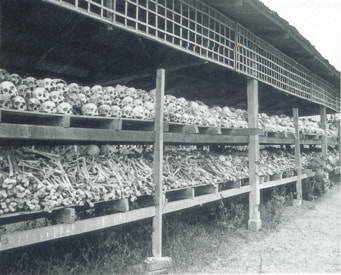 The Black Book of Communism is a monumental work that is heralding the ultimate defeat and disgrace of Communism worldwide. It was a best seller when first published in France, selling nearly 200 000 copies. That is a very large print run for a hard back book almost 900 pages long! It led the Communist Party in France to hold crisis sessions considering whether it could continue to hold to Marxism in any shape or form. The consensus was that they would have to abolish the Communist Party! Since being translated into English and published by Harvard University Press, The Black Book has also provoked a sensation in Great Britain and the United States. The Black Book is a scholarly, detailed account of the crimes of Communism starting with the Russian Revolution and continuing through Eastern Europe, Red China, North Korea, Vietnam, Cuba, Cambodia, Ethiopia, Mozambique, Angola and Afghanistan. The Black Book’s exhaustive indictment of Communism is all the more compelling because all 6 of its authors were once communists or "fellow travellers" with communism. They now regard themselves as "liberals." They are researchers, professors and journalists associated with the Paris based Centre for the Study of History and Sociology of Communism. The editor of Black Book, Stephane Courtois is also the editor of the magazine "Communisme." ---
As the Foreword declares: "Ten years ago, the authors of The Black Book would have refused to believe what they now write . . . exploration of the Soviet archives – and eventually those of East Asia – will continue to redress the balance." The writers felt a "duty of remembrance" to the at least 100 million victims murdered under Marxist regimes declaring: "Surely, then, the Party of humanity can spare a little compassion for the victims of the inhumanity so long meted out by so many of its own partisans." Their intention was that the book serve as both history and as a memorial to those victims whose very memory has been wiped out. In his Introduction, Stephane Courtois declares: "the fact remains that our century has outdone its predecessors in its bloodthirstiness . . . Indeed (Communism) occupies one of the most violent and most significant places of all . . . Communism predated Fascism and Nazism, outlived both, and left its mark on four continents . . . Incredibly, the crimes of Communism have yet to receive a fair and just assessment from both historical and moral viewpoints. This book is one of the first attempts to study Communism with a focus on its criminal dimensions... --- "Communism has committed a multitude of crimes not only against individual human beings but also against world civilization and national cultures. Stalin demolished dozens of churches in Moscow; Nicolae Ceausescu destroyed the historical heart of Bucharest to give free reign to his megalomania; Pol Pot dismantled the Phnom Penh cathedral stone by stone and allowed the jungle to take over the temples of Angkor Wat; and during Mao’s Cultural Revolution, priceless treasures were smashed or burned by the Red Guards. Yet, however terrible this destruction may ultimately prove for the nations in question and for humanity as a whole, how does it compare with the mass murder of human beings – of men, women, and children?" "These crimes tend to fit a recognizable pattern . . . the pattern includes execution by . . . firing squads, hanging, drowning, battering, and, in certain cases, gassing, poisoning, or ‘car accidents’; destruction of the population by starvation, through man-made famine, the withholding of food, or both; deportation, through which death can occur in transit (either through physical exhaustion or through confinement in an enclosed space) . . . or through forced labour (exhaustion, illness, hunger, cold) . . ." The Black Book presents a very conservative estimate of the number of civilians murdered by Marxist regimes: USSR: 20 million; China: 65 million; Vietnam: 1 million; North Korea: 2 million; Cambodia: 2 million; Eastern Europe: 1 million; Latin America: 150 000; Africa: 1,7 million; Afghanistan: 1,5 million. At the very least, the total approaches 100 million people killed by Communist governments between 1917 and 1991. Just in Cambodia, Pol Pot, in three and a half years, "engaged in the most atrocious slaughter" and succeeded in wiping out a quarter of the total population. As far as war crimes go, the book deals with the invasion by the Soviet Union of Finland and Poland in 1939 and of Latvia, Lithuania and Estonia in 1940, the invasion of Hungary in 1956, Czechoslovakia in 1968 and Afghanistan in 1979. Stalin ordered large numbers of war crimes. The liquidation of almost all the Polish officers taken prisoner in 1939, with 4 500 men butchered by the Red Army at Katyn, is only one such episode. "However, other crimes on a much larger scale are habitually overlooked, including the murder or death in the gulag of tens of thousands of German soldiers taken prisoner from 1943 to 1945. Nor should we forget the rape of countless German women by Red Army soldiers in occupied Germany, as well as the systematic plundering of all industrial equipment in the countries occupied by the Red Army . . . the organized resistance fighters . . . who were executed by firing squads or deported after being taken prisoner – for example, the soldiers of the anti-Nazi Polish resistance organizations, and Afghan resistance fighters. Thus in the name of an ideological belief system were tens of millions of innocent victims systematically butchered." --- In The Red Terror in Russia, published in Berlin in 1924, the Russian historian and socialist Sergei Melgunov cited Martin Latsis, one of the first leaders of the Cheka (the Soviet political police), as giving the following order on 1 November 1918 to his henchmen: "We don’t make war against any people in particular. We are exterminating the bourgeoisie as a class. In your investigations don’t look for documents and pieces of evidence about what the defendant has done, whether in deed or in speaking or acting against Soviet authority. The first question you should ask him is what class he comes from, what are his roots, his education, his training, and his occupation."The "dekulakization" of 1930 – 32 repeated the policy of "de-Cossackization" but on a much grander scale . . . "to exterminate the kulaks as a class." --- The kulaks who resisted collectivization were shot, and the others were deported with their wives, children, and elderly family members . . . forced labour in wilderness areas of Siberia or the far north left them with scant chance of survival. Many tens of thousands perished there. As for the great famine in Ukraine in 1932–33, which resulted from the rural population’s resistance to forced collectivization, 6 million died in a period of several months. The Black Book indicts the Soviet Union’s Communist leaders with the following crimes (amongst many others): — The execution (without trial) of tens of thousands of hostages and prisoners, and the murder of hundreds of thousands of workers and peasants in Russia, from 1918 to 1922. — Deliberately destroying all food and crops so as to starve to death 5 million people in Russia in 1922. — The extermination of the Cossacks in 1920. — The liquidation of 690 000 people in the Great Purge of 1937–38. — The destruction of 4 million Ukrainians and 2 million other people in the man made and systematically perpetuated famine of 1932–33. The writers of The Black Book point out that while thousands of books and dozens of big screen films such as "Sophie’s Choice" and "Schindler’s List" have been devoted to exposing the atrocities of Nazism, there are no comparable films devoted to exposing the even greater atrocities of Communism. "Scholars have neglected the crimes committed by the Communists. While names such as Himmler and Eichmann are recognized around the world as bywords for twentieth-century barbarism, the names of Feliks Dzerzhinsky, Genrikh Yagoda, and Nikolai Ezhov languish in obscurity. As for Lenin, Mao, Ho Chi Minh, and even Stalin, they have always enjoyed a surprising reverence!" The Foreword for the English translation of The Black Book is written by Martin Malia, professor of history at the University of California, Berkley. Prof. Malia declares: "Communism has been the great story of the twentieth century. Bursting into history from the most unlikely corner of Europe amid the trauma of World War I, in the wake of the cataclysm of 1939–1945 it made a great leap westward to the middle of Germany and an even greater one eastward to the China Seas. With this feat . . . it had come to rule a third of mankind and seemed poised to advance indefinitely. For seven decades it haunted world politics, polarizing opinion between those who saw it as the socialist end of history and those who considered it history’s most total tyranny." --- With Socialist fables of a "worker’s paradise" now consigned to what Trotsky called "the ash heap of history," perhaps a moral, rather than a social approach to the Communist phenomenon can yield a truer understanding, writes Malia: "For the . . . Soviet social process claimed victims on a scale that has never aroused a scholarly curiosity at all proportionate to the magnitude of the disaster. The Black Book offers us the first attempt to determine, overall, the actual magnitude of what occurred, by systematically detailing Leninism’s crimes, terror, and repression from Russia in 1917 to Afghanistan in 1989."This factual approach puts Communism in what is, after all, its basic human perspective: a tragedy of planetary dimensions . . . the Communist record offers the most colossal case of political carnage in history. And when this fact began to sink in with the French public, an apparently dry academic work became a publishing sensation, the focus of impassioned political and intellectual debate. --- "The shocking dimensions of the Communist tragedy, however, are hardly news to any serious student of twentieth-century history, at least when the different Leninist regimes are taken individually. The real news is that at this late date the truth should come as such a shock to the public at large. To be sure, each major episode of the tragedy — Stalin’s Gulag, Mao Zedong’s Great Leap Forward and his Cultural Revolution, Pol Pot’s Khmer Rouge – had its moment of notoriety. But these horrors soon faded away into ‘history’; nor did anyone trouble to add up the total and set it before the public. The surprising size of this total, then, partly explains the shock the volume provoked. The full power of the shock, however, was delivered by the unavoidable comparison of this sum with that for Nazism, which at an estimated 25 million turns out to be distinctly less murderous than Communism. "Communism’s fall, brought with it no Nuremberg trial, and hence no de-Communization to solemnly put Leninism beyond the pale of civilization; and of course there still exist Communist regimes in international good standing. Another reason for our dual perception is that defeat cut down Nazism in the prime of its iniquity, thereby eternally fixing its full horror in the world’s memory. By contrast, Communism, at the peak of its iniquity, was rewarded with an epic victory – and thereby gained a half-century in which to lose its dynamism, to half-repent of Stalin, and even, in the case of some unsuccessful leaders (such as Czechoslovakia’s Alexander Dubcek in 1968), to attempt giving the system a ‘human face.’ As a result of these contrasting endings of the two totalitarianisms all Nazism’s secrets were bared fifty years ago, whereas we are only beginning to explore Soviet archives, and those of East Asia and Cuba remain sealed. "By the time of Communism’s fall the liberal world had had fifty years to settle into a double standard regarding its two late adversaries. Accordingly, Hitler and Nazism are now a constant presence in Western print and on Western television, whereas Stalin and Communism materialize only sporadically. The status of ex-Communist carries with it no stigma, even when unaccompanied by any expression of regret; past contact with Nazism, however, no matter how marginal or remote, confers an indelible stain. "No Gulag camps have been turned into museums to commemorate their inmates; all were bulldozed into the ground during Khrushchev’s de-Stalinization . . . Throughout the former Communist world, moreover, virtually none of its responsible officials has been on trial or punished." Murder is murder whatever the ideological motivation; and this is undeniably true for the equally dead victims of both Nazism and Communism. In its provocative pages The Black Book presents a balance sheet of our current (limited) knowledge of Communism’s human costs, archivally based . . . this inventory is what gives the book its power; and indeed, as we are led from country to country and from horror to horror, the cumulative impact is overwhelming. The book documents that Communist regimes did not just commit criminal acts (all states do so on occasion); "they were criminal enterprises in their very essence, on principle, so to speak, they all ruled lawlessly, by violence and without regard for human life." In a contrast between Czarist Russia and the Soviet Union, the Black Book notes that while an average of 68 people were executed a year under the Czar, up to 690 000 executions a year could be carried out under the Commissars (such as in The Great Purge!) In 1918, Lenin personally authorised the execution of 15 000 people in just 2 months. In just 7 years 7 million people were condemned to the concentration camps, in the gulag. The Black Book proves that "there never was a benign, initial phase of Communism before some mythical ‘wrong turn’ threw it off track. From the start Lenin expected, indeed wanted, civil war to crush all ‘class enemies’, and this war, principally against the peasants, continued with only short pauses until 1953. So much for the fable of ‘good Lenin/bad Stalin . . . Communism’s recourse to ‘permanent civil war’ rested on the ‘scientific’ Marxist belief in class struggle as the ‘violent midwife of history,’ in Marx’s famous metaphor." Similarly, Courtois adds, Nazi violence was founded on a Darwinian Evolutionism promising national regeneration through "survival of the fittest." The Black Book concludes that our current history books and social and political judgements are scandalously out of line with the 20th Century’s real balance sheet of political crime. "They promise them freedom, while they themselves are slaves of depravity . . ." 2 Peter 2:19 Dr. Peter Hammond The book is available for purchase at Christian Liberty Books. Related articles:- Communist Liberation The Cold War and the Iron Curtain 20 Years After the Fall of the Berlin Wall
1 Comment
Andre
7/11/2023 10:05:25
Hi
Reply
Leave a Reply. |
More Articles
All
Archives
July 2024
|
"And Jesus came and spoke to them, saying, “All authority has been given to Me in heaven and on earth.
Go therefore and make disciples of all the nations, baptizing them in the name of the Father and of the Son and of the Holy Spirit,
teaching them to observe all things that I have commanded you; and lo, I am with you always, even to the end of the age.” Amen.” Matthew 28: 18-20
Go therefore and make disciples of all the nations, baptizing them in the name of the Father and of the Son and of the Holy Spirit,
teaching them to observe all things that I have commanded you; and lo, I am with you always, even to the end of the age.” Amen.” Matthew 28: 18-20
|
P.O.Box 74 Newlands 7725
Cape Town South Africa |
|
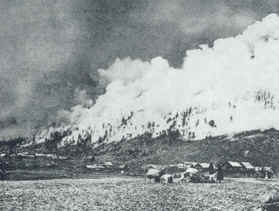
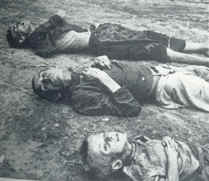
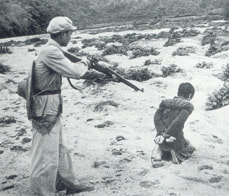
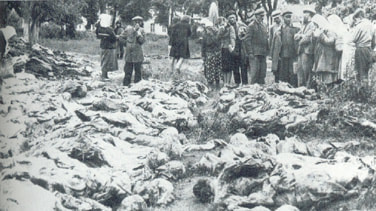
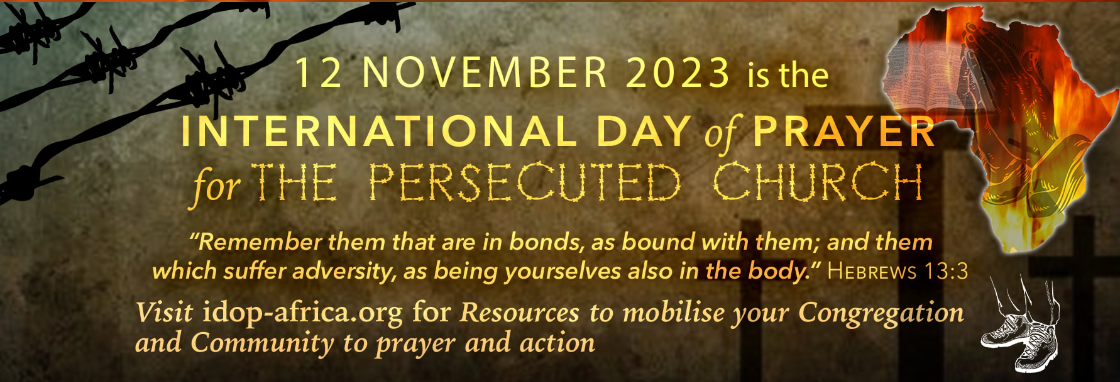
 RSS Feed
RSS Feed
